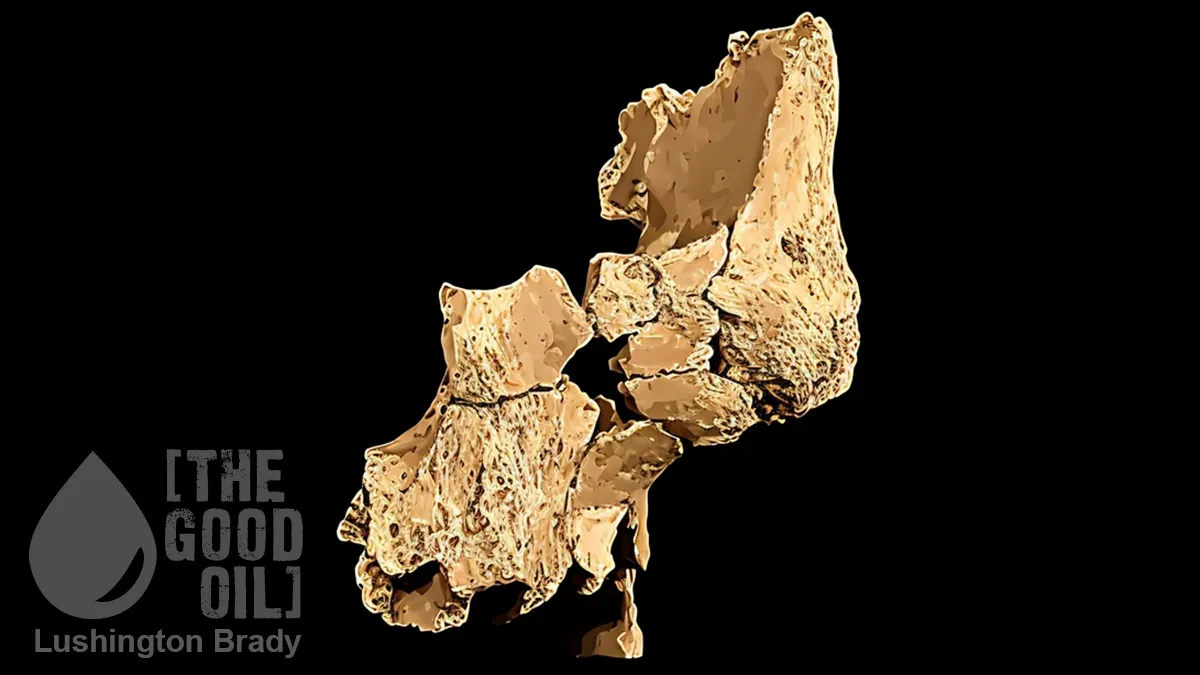The great thing about science is that, contrary to the conceits of the left establishment, it’s never settled. The universe was locked in a steady state, until it wasn’t: a discovery made by Catholic priest Georges Lemaître and strongly resisted by Albert Einstein (thereby confounding another conceit of the left establishment). Disease was spread by bad smells (‘miasma’), until it wasn’t: tiny organisms called ‘germs’ were to blame. Newton’s laws of motion ruled the universe, until they were superseded by Einstein’s.
And so on.
Evolution was another discovery that upended entire worldviews. So much so that some Luddites still refuse to accept what is one of the most well-documented facts about the natural world. What particularly upsets some is the idea that humans evolved from ‘lower’ animals (the ‘angel or the ape’ argument), even though the broad outlines of human evolution are unassailably documented.
Within those broad outlines, though, there’s still plenty to be discovered, and plenty of deeply held assumptions in danger of being overturned.
Recent discoveries in Spain stand to challenge two in particular: the ‘world’s oldest living culture’ lie and maybe even the ‘Out of Africa’ theory.
Of course, that early hominids evolved in Africa and later dispersed around the globe is not in serious dispute. What the Spanish finds may challenge is just when and where the modern human family evolved.
Once again, the UNESCO World Heritage Site at Atapuerca, Spain, is offering new insights into the history of human evolution […]
The archaeopalaeontological sites in the Atapuerca hill range are located in the historic province of Burgos, on the Castilla-León plateau in Spain, just 15km from the city. This karstic complex contains more than 4km of caves filled with sediments ranging from the Early Pleistocene to the Bronze Age. Currently, more than 10 sites are being excavated, and human fossils have been recovered from six of them, dating as far back as 1.4 million years.
The most recent find, bone fragments from an adult individual’s midface, was discovered in 2022 and labelled ‘ATE7-1’. The depth of the remains, two metres below a previously discovered human jawbone, suggest that ATE7-1 is much older, as much as 1.4 to 1.2 million years ago).
This is not the first time the Atapuerca site has reshaped understanding of European hominin evolution.
One of the most significant findings was the identification of H antecessor, a species that inhabited this region about 850,000 years ago, as confirmed by direct dating of the human remains.
This was already a huge challenge to existing assumptions, specifically, the ‘short chronology’ hypothesis that argues that humans only first inhabited Europe some 500,000 years ago. This was the Middle Pleistocene: that is, the middle of the Ice Ages (which may never have actually ended, but that’s another story). It’s long been assumed that humans periodically abandoned Europe as the glaciers advanced and receded. More recent evidence, though, suggests that, during at least the last glacial maximum, some humans stayed put in Europe and shivered it out.
Which could push continual human habitation of Europe to at least 100,000 years ago – so much for the 45,000 years of human habitation in Australia and the so-called ‘world’s oldest living culture’.
What, though, does the latest discovery at Atapuerca tell us about human evolution? Using high-resolution mCT images and 3D to piece the bone fragments together, scientists are able to compare ATE7-1’s facial bone structure and teeth to other species, such as H antecessor. But ATE7-1’s face structure is unlike H antecessor’s relatively modern-looking face.
Next, we compared the ATE7-1 remains to other earlier hominin groups, including those from the Dmanisi site (Republic of Georgia), dated to about 1.8 million years ago. Interestingly, ATE7-1 differed from the Dmanisi hominins, especially in the nasal region.
However, ATE7-1 shares some morphological similarities with H erectus, including both African and Asian populations. These include the lack of a projecting nose and the forward-projection of the midface.
On the contrary, the ATE7-1 fossil differs from H. erectus in having a shorter and narrower face. Still, ATE7-1 is missing key features characteristic of H erectus, so for now we are classifying ATE7-1 to H aff erectus, meaning that it’s closely related to this species, but lacks some of the defining morphological features.
Animal remains with cut marks and stone tools with wearing, discovered along with the hominin fossils, suggest that H aff erectus were butchering meat in their caves. Caves which were, at that time, in a humid forest landscape.
This discovery opens exciting new possibilities for understanding the origins and population dynamics of the earliest human settlements in Western Europe.
The hominin fossils from Dmanisi already told us that hominins had left Africa at least 1.8 million years ago. Now, the Sima del Elefante finding tells us that within a few hundred thousand years, hominins had made it to the westernmost part of Europe, and during that time, their morphological characteristics had evolved […]
Finally, we must consider the possible relationship between ATE7-1, Homo antecessor, and Neanderthals within the European landscape.
Neanderthals were not, of course, a direct ancestor of H sapiens – us. More, a kind of cousin species. One with which, we also now know, early true humans occasionally interbred, with small amounts of Neanderthal genes surviving today in modern Europeans, Eurasians, and East Asians. Lest anyone feel insulted by such an idea, bear in mind that Neanderthals were far from the clumsy, ugly brutes of the popular imagination. In fact, Neanderthals had slightly bigger brains than ours.
Whether that made them smarter is a matter of dispute. The structure of Neanderthal brains had larger areas devoted to vision and movement, while modern humans have more neurons in the frontal lobe of the brain, dedicated to voluntary movement, expressive language and for managing higher level executive functions.
Whatever the truth is, it’s plain that there’s a lot more yet to be discovered about the human story.









